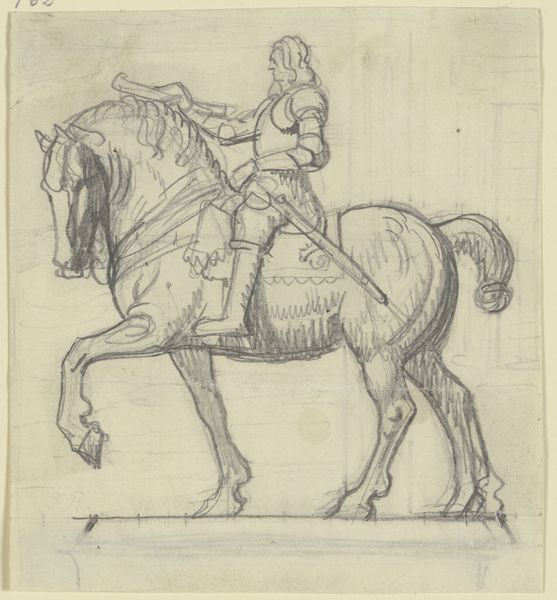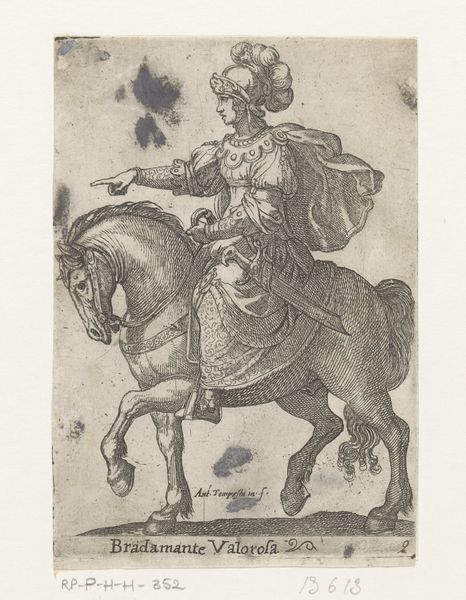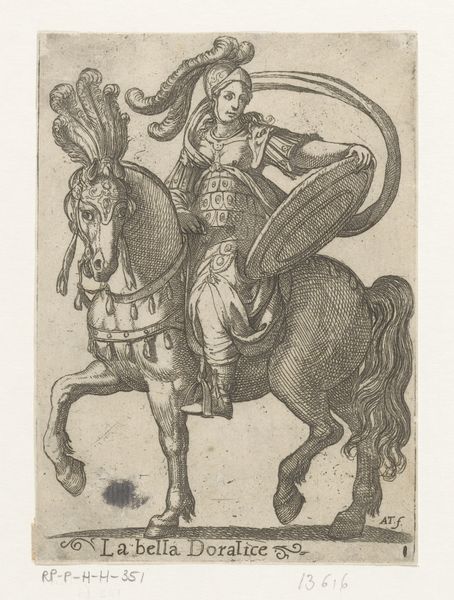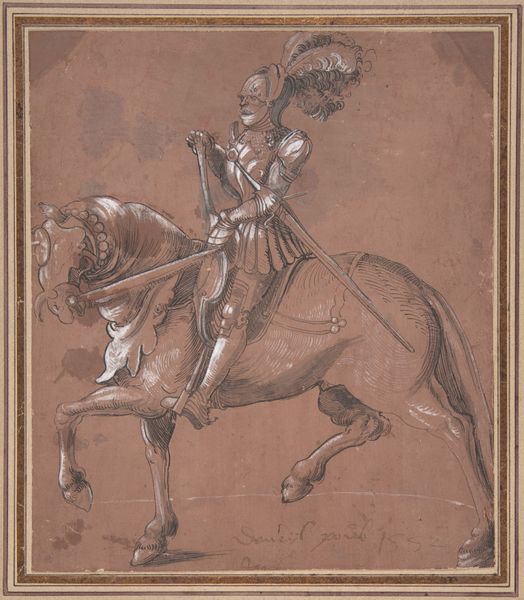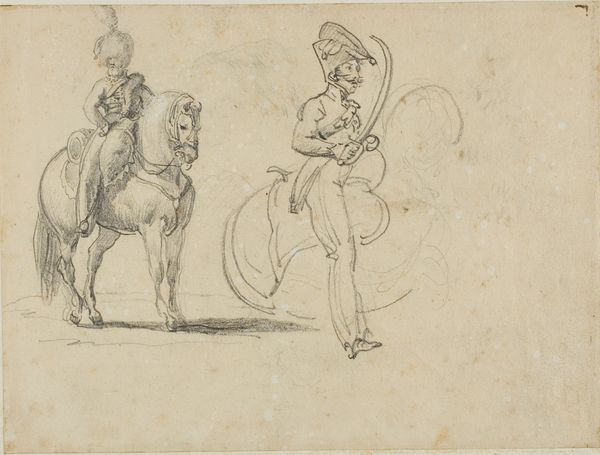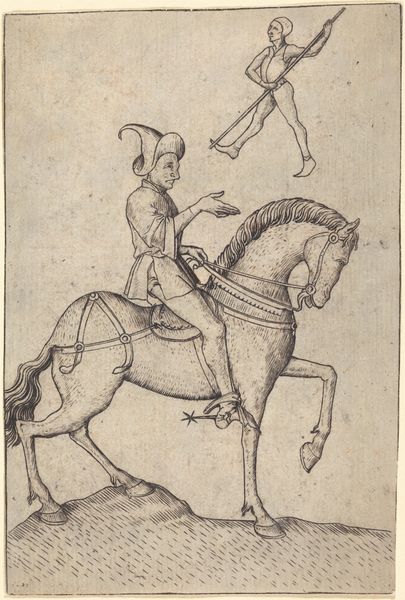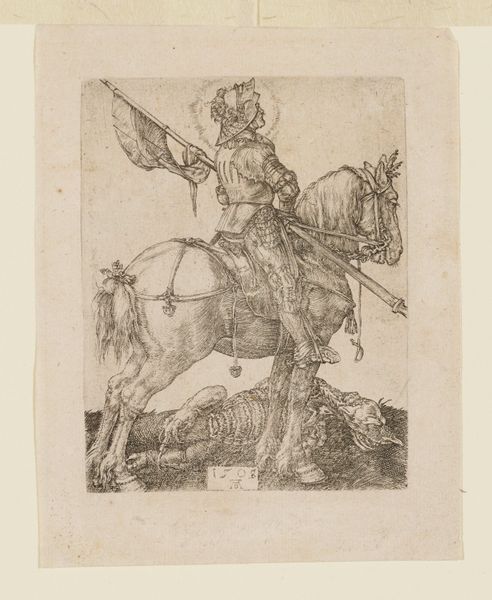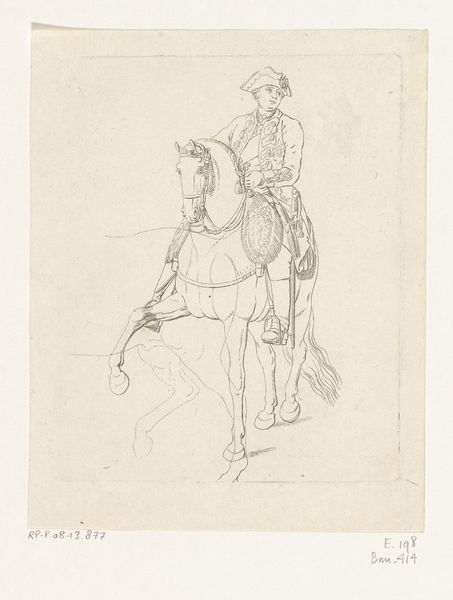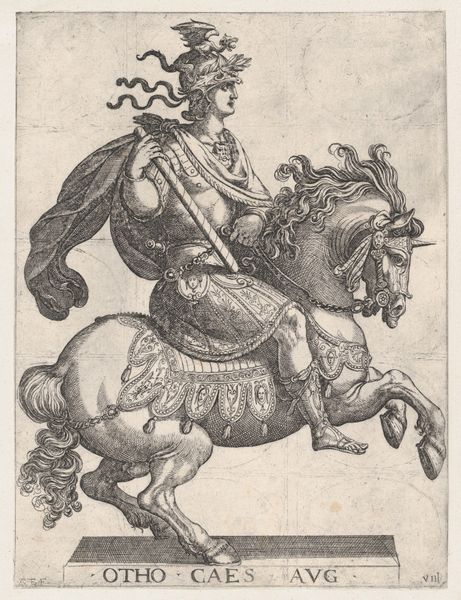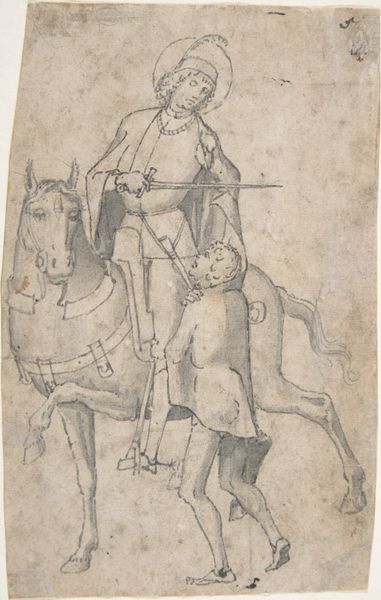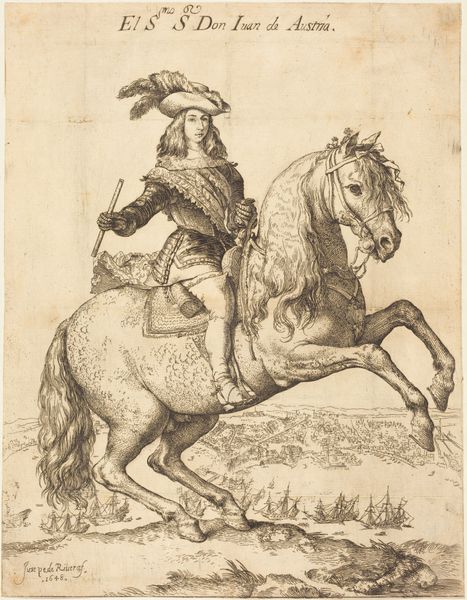
drawing, ink, pen
#
portrait
#
drawing
#
imaginative character sketch
#
toned paper
#
light pencil work
#
pencil sketch
#
landscape
#
mannerism
#
figuration
#
personal sketchbook
#
ink
#
ink drawing experimentation
#
pen-ink sketch
#
sketchbook drawing
#
pen
#
storyboard and sketchbook work
#
sketchbook art
Dimensions: height 272 mm, width 205 mm
Copyright: Rijks Museum: Open Domain
Curator: We’re looking at Jacques Bellange's "Veldheer te paard, rijdend naar rechts", or "Commander on Horseback, Riding to the Right," created sometime between 1602 and 1620. It’s a pen and ink drawing on toned paper. Editor: Immediately I’m struck by the sheer fancifulness of it all. Look at that extravagant plume! It feels almost theatrical, like a costume sketch for some baroque drama. Curator: Bellange was operating in the Mannerist style, characterized by a certain artifice and exaggeration, a move away from Renaissance naturalism. We can really see it here in the highly stylized rendering of the horse and rider. The etching's medium allows for delicate, intricate details. Consider how the materiality impacts the final form—lines defining shape, ink saturation determining value. Editor: Absolutely. And even the slightly faded tone of the paper adds to the feeling of a discovered artifact. It’s as if we've stumbled upon someone’s secret daydream. The quick, confident strokes give it so much energy, it leaps off the page, almost unrestrained. What do you make of the horse's decorations, Curator? Curator: It's likely meant to be parade armor, used for display rather than actual combat, an aesthetic consideration as much as a practical one. Armor production was an art itself, employing skilled metalworkers and often integrating complex decorative elements. We should recognize those laborers too. Editor: True, these craftsmen were unsung heroes in a way. What do you think he was actually trying to capture here? Power? Grandeur? A bit of self-aggrandizement? Curator: The function of art in a court setting like Bellange's often served to reinforce the patron's status, yes. He was clearly catering to a wealthy elite, creating images that flattered and impressed. The economy of image production underwrites any reading. Editor: I see a restless imagination at play. I wouldn’t mind having that elaborate headdress myself for a gallop in the park! Curator: Well, beyond our own imaginings, it is always helpful to remember the labor, materials and circumstances surrounding its creation. Editor: And yet, as much as we understand the mechanics and motivations behind the drawing, that sense of playful fantasy remains undeniable. A lovely piece.
Comments
No comments
Be the first to comment and join the conversation on the ultimate creative platform.
